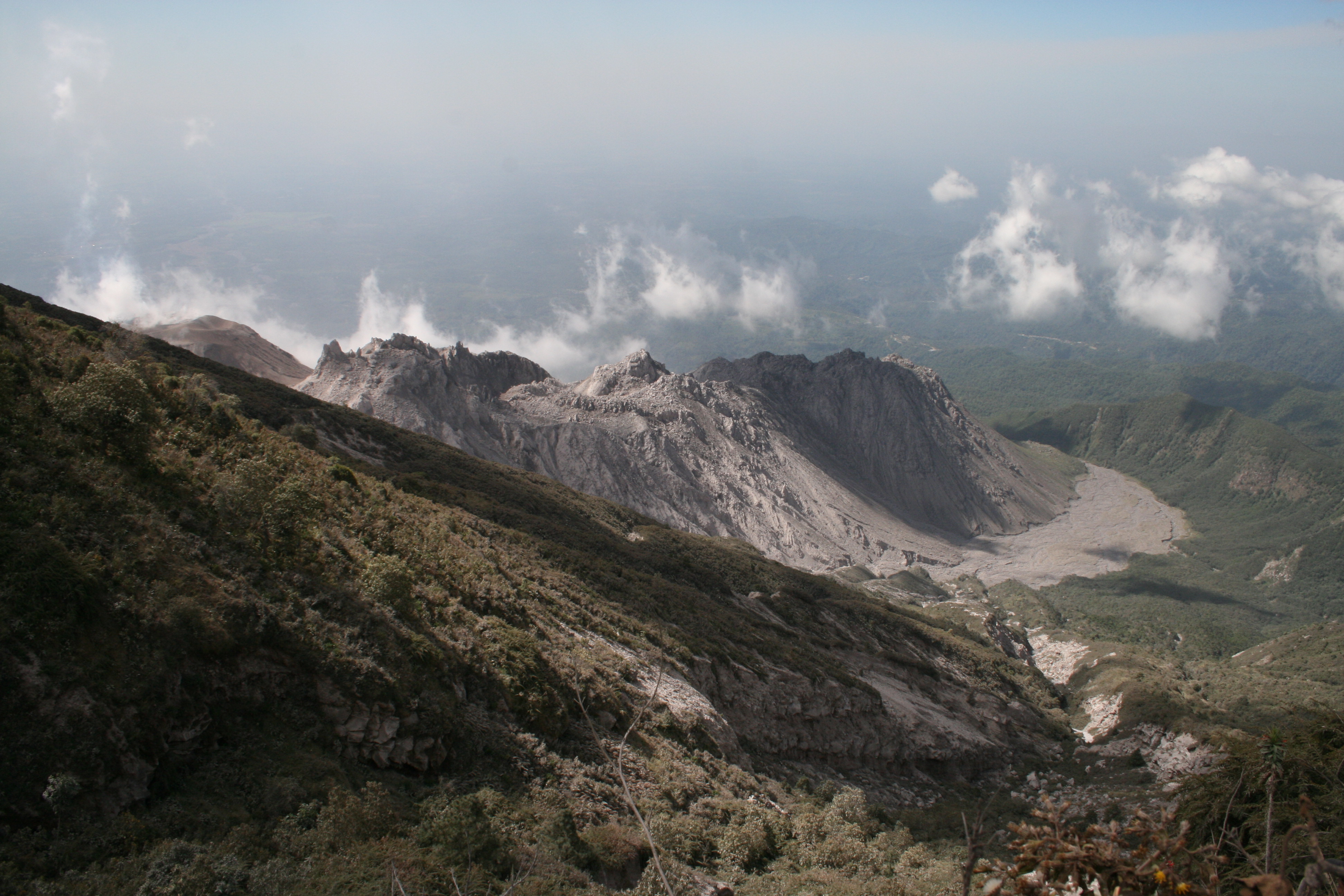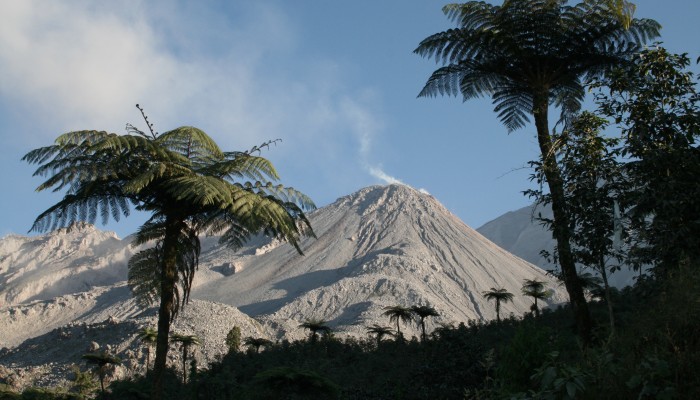
Santiaguito volcano, Guatemala, burst into life in 1922 and is now the second longest continuing eruption. It has outlasted both Stromboli (Italy) and Sangay (Ecuador), both erupting since 1934, and is only outdone by Yasur (Vanuatu), which has been erupting at least since 1774, when first visited by Captain Cook.
These long-lived eruptions give us an unusual opportunity to use the slowly-extruded products to peer deep into the magma plumbing system. Santiaguito itself is now a rubbly complex of blocky lavas and domes that nestle in the crater formed by the explosive destruction of Santa Maria volcano, Guatemala, in 1902, in one of the largest eruptions of the last century.
After a violent beginning, Santiaguito has grown slowly (rather less than 1 cubic metre of lava/second) and in pulses for the past 90 years. Bill Rose, who has worked on Santiaguito since the early 1970’s, has documented this history very nicely. For many years, Santiaguito has been a magnet for geophysical and remote-sensing field campaigns, both because of its rather regular ash and gas explosions, and the fact that it is relatively accessible and very closely monitored by INSIVUMEH. Rather less obligingly, though, the volcano is often cloud-bound by mid-morning, at least during the dry season, when moist westerly winds roll in from the Pacific.
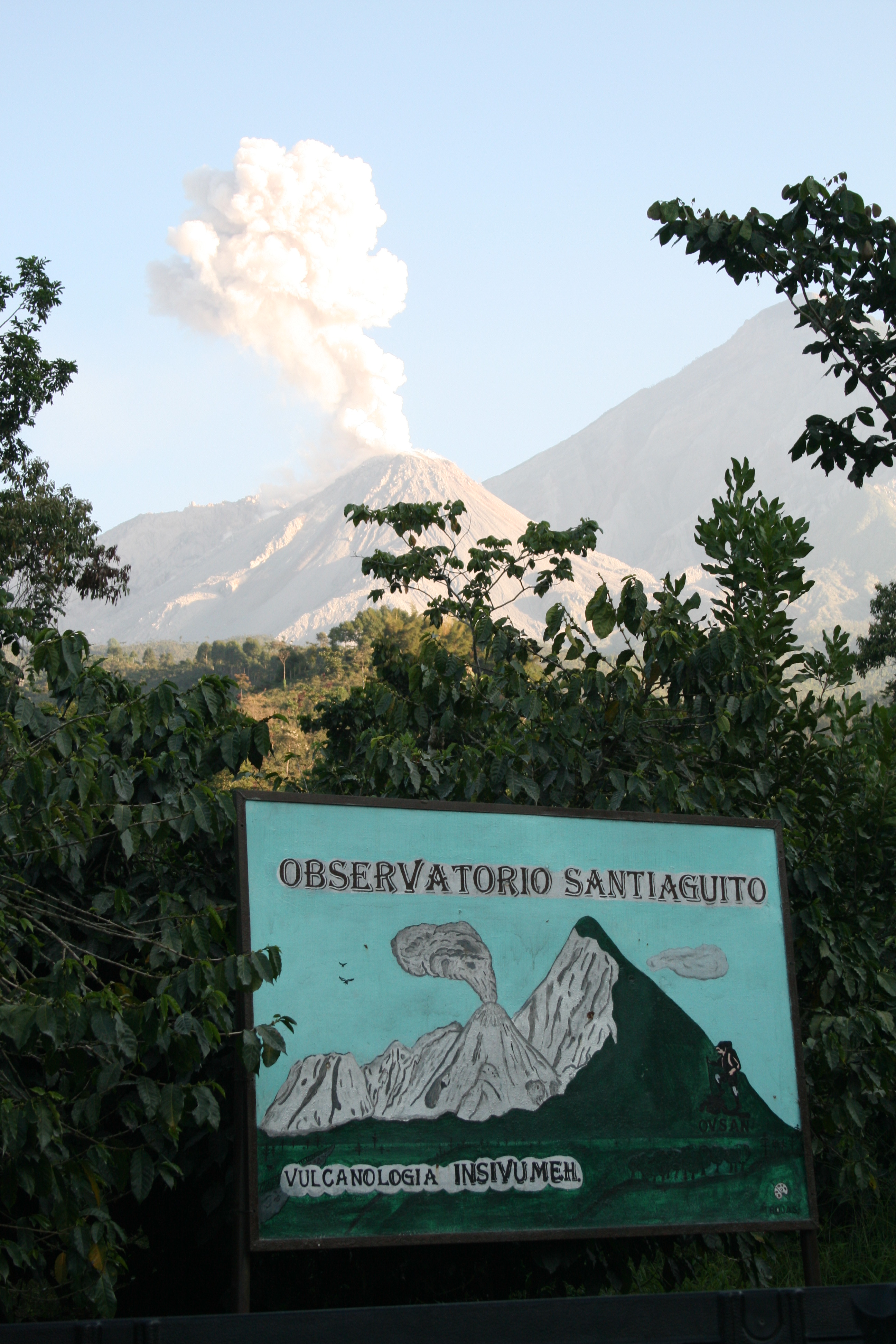
Explanatory poster, showing the fuming dome of Santiaguito sitting in the scar of the 1902 eruption crater, Santa Maria.
While Santiaguito has only a very slow growth rate, at the lower end of what is typical of actively-extruding domes, it poses major hazards to a number of local communities.
Lahars are common in the rainy season, and transport the accumulated loose talus from the flanks of the domes downstream, intermittently causing severe damage. Ash deposition can cause disruption to a wider community, extending both to the Fincas and cloud-forest coffee plantations or, more rarely, to agricultural and urban centres further afield, such as Xela (Quetzaltenango).
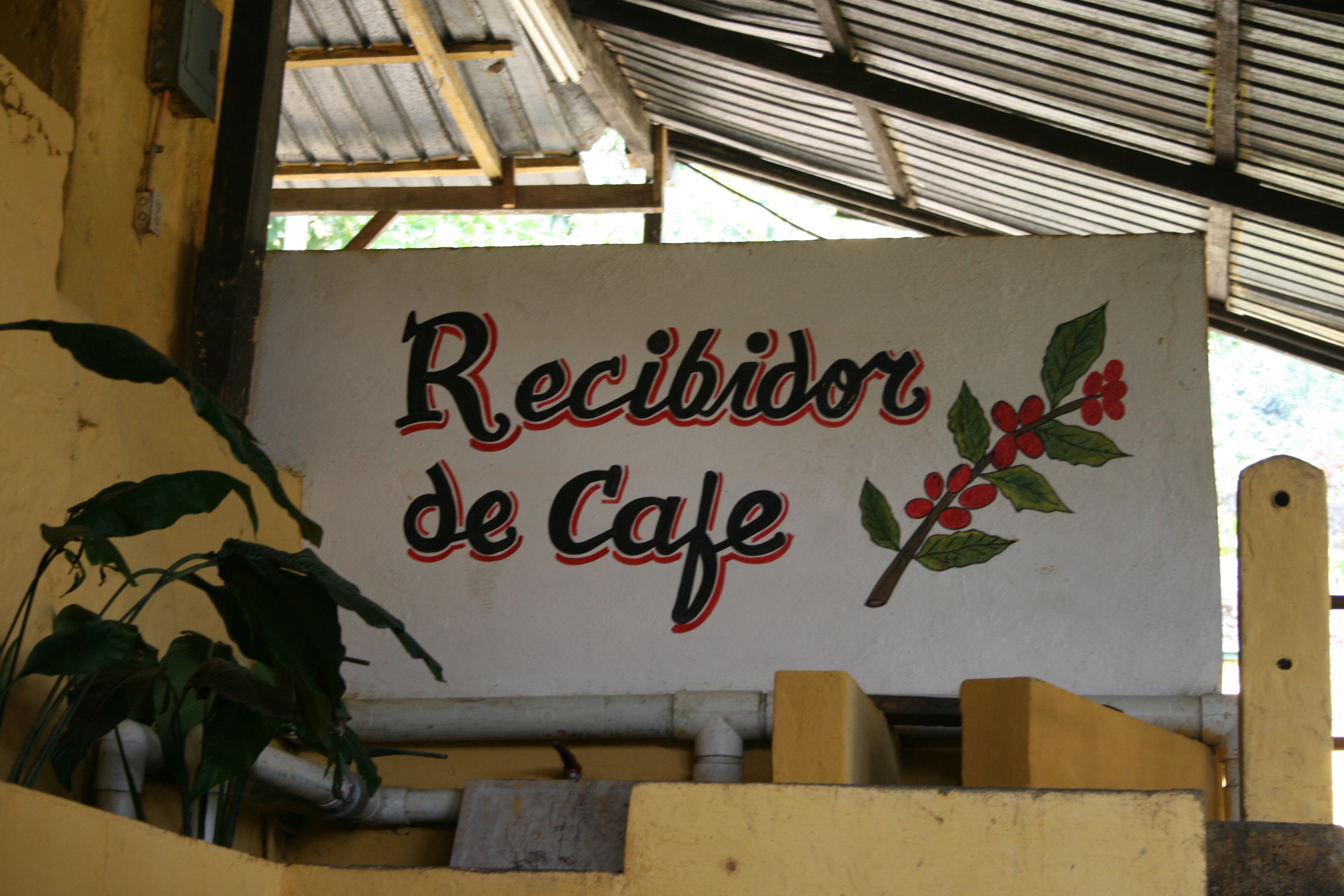
This way please.. coffee-bean receptor at Finca el Faro, on the flanks of Santa Maria volcano, Guatemala.
Receny years have seen several episodes of elevated activity at the volcano, and in this past week, Santiaguito has experienced another such phase. As reports from CONRED make clear, this elevated activity culminated in a large-scale slope failure from the active dome, Caliente, triggering pyroclastic flows and lofting ash plumes high into the atmosphere. The rainy-season legacy of these events will most likely be more lahars, as drainages now charged with debris become unclogged and rapidly incised.
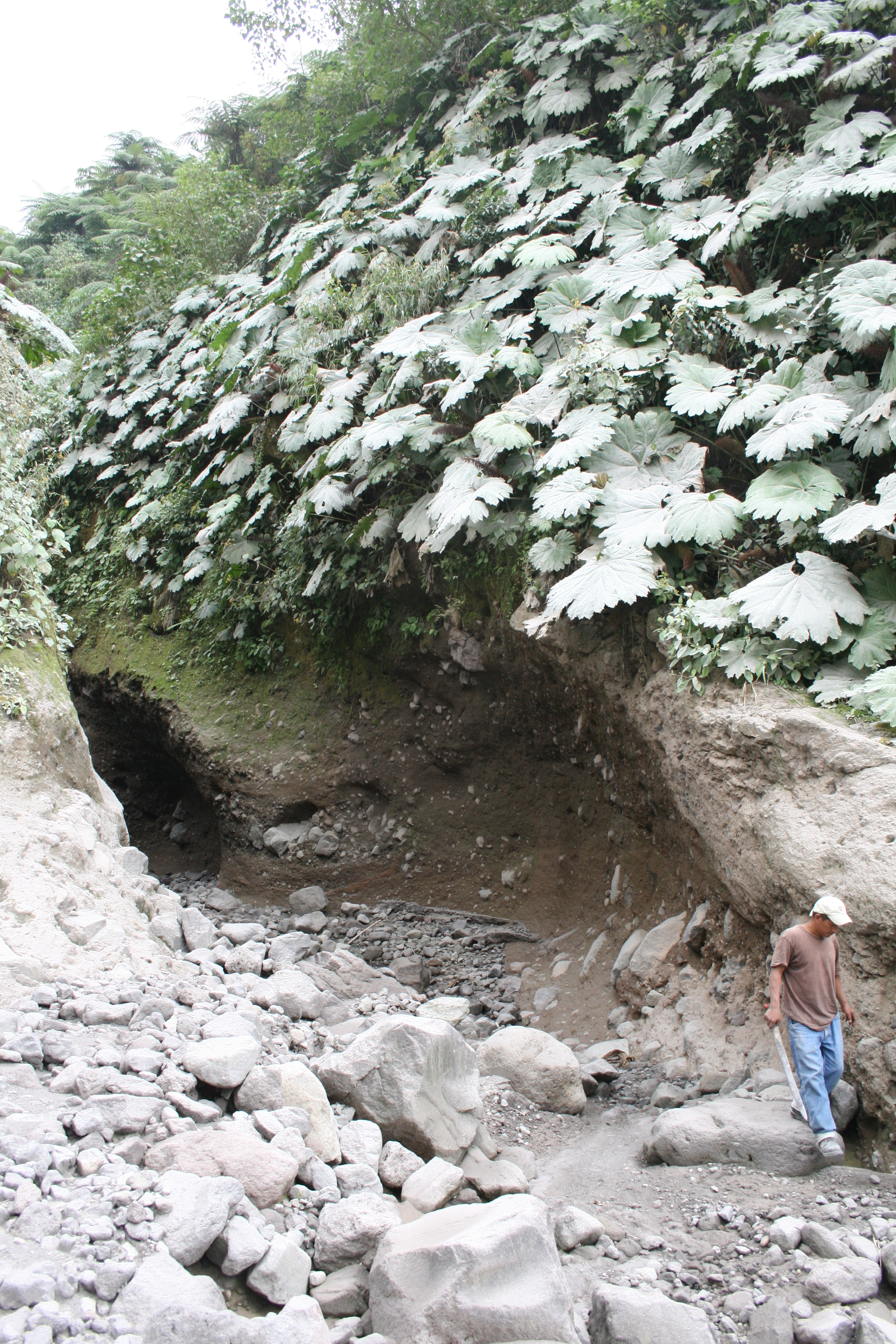
Typical deeply-incised drainage channel, high up on slopes of Santiaguito, with recent ash fall on the vegetation.
My own interest in Santiaguito is in the long-term story of the volcanic plumbing system recorded in the rocks that have been progressively removed from the conduit during the eruptions of the past 90 years. Jeannie Scott has recently completed a study of this for her PhD (funded by NERC), working on samples that span much of the eruption history. The remarkable feature is the surprisingly simple story that emerges. The 1902 eruption evacuated a large volume of dacite magma with a silica content of about 66 wt%. The 1922 eruption appears to have begun by emptying what was left behind of this pool of melt from 1902, and since then the volcano has been erupting increasingly silica-poor magmas, presumably tapping deeper into the plumbing system. The latest lavas analysed (from 2002) have about 62% SiO2. These observations suggest that future lavas may continue to get progressively more silica-poor; as they do so, they may also get warmer and a little less viscous, depending on conditions at depth. Unfortunately, in the process of slow extrusion, the lavas lose much of their dissolved gas, crystallise and eventually quench, so that it is quite a challenge to track back to the ‘original’ conditions under which the magmas were stored. This still leaves several unresolved puzzles: how is it that the conduit system can remain open, allowing magma to continue to leak out to the surface? And what is it that drives the long-term pulses of eruptive activity? Answers to these questions will probably emerge once we have a better understanding of the full spectrum of long-lived dome-forming eruptions at andesitic volcanoes, such as those at Soufriere Hills (Montserrat), Colima (Mexico) and Merapi (Indonesia).
Links to further reading:
JAJ Scott et al., 2013, Geochemistry and evolution of the Santiaguito volcanic dome complex, Guatemala, Journal of Volcanology and Geothermal Research 252, 92-107.
JAJ Scott et al., 2012, The magmatic plumbing system beneath Santiaguito volcano, Guatemala, Journal of Volcanology and Geothermal Research, 237–238, 54–68.
Update: February 2013.
Jeannie Scott has now written and made freely available a colour booklet describing Santiaguito volcano and its activity, and a poster summarising recent work on the volcano.

